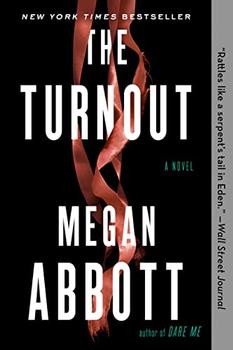Summary | Excerpt | Reading Guide | Reviews | Beyond the Book | Readalikes | Genres & Themes | Author Bio

But now it was Dara's and Marie's voices-Dara's low and flinty (Shoulders down, lift that leg, higher, higher ...) and Marie's light and lilting, Marie calling out Here comes the Mouse King! to all her five-year-olds and bending her feet and hands into claws, the girls screaming with pleasure ...
Charlie in the back office listening to parents bemoan their child's lack of discipline, the exorbitant cost of pointe shoes, the holiday schedule, Charlie nodding patiently as mothers spoke in hushed tones about their own long-ago ballet aspirations, of the mad fantasy of tutus and rosin, satin and tulle, floodlights and beaming faces, leaping endlessly into a lover's waiting arms.
Everything worked, nothing ever changed.
And yet gradually the Durant School of Dance, decades after opening in a former dry goods store with a drooping ceiling, had become a major success.
"I always knew it could be," Charlie said.
Which one does your daughter have? Dara or Marie?
They look so much alike, but Dara's dark to Marie's fair.
They look so much alike, but Dara has the long swan neck and Marie the long colt legs.
Both carry themselves with such poise. They show our daughters grace and bearing.
They bend and twist our squirmy, pigeon-breasted little girls into lithe and lissome dancers. Our girls walk into the Durant School shrill and strident, with the clatter of phones and the slap of flip-flops, and an hour later, they have been transformed into the strong, sweated stillness of an empress, a czarina, a Durant.
Our daughters love them both, especially Marie.
Marie, because she taught the younger ones. Because she would get down on the floor with them, would fix their loose braids and, when they burst into tears, secretly give them strawberry sugar wafers. After class, she might even teach them how to do that dance like their favorite pop singer if they showed her first on their phones. At day's end, Dara would peek into Marie's studio, the pastel crush of wafer crumbs, the abandoned hair ribbons and bent bobby pins, and wonder if Marie understood little girls too well.
Dara followed their mother's model. In her studio, she stood queen-like, her chin jutting like a wolf's-that's how Charlie described it-quick to correct, quick to unravel them, the girls with the lazy extension, the girls pirouetting with bent knees.
Someone had to keep up the tradition of rigor, of firm discipline, and it inevitably fell to Dara. Or suited her best. It was hard to tell the difference.
But, for the most part, to all the little girls, their faces upturned, their matching pink tights and scuffed leather slippers-still more to their parents who crowded the lobby, who steamed up the windows, unwrapping their children from fuzzy, puffy coats and nudging them, gently, into the studio-Dara and Marie were the same, but different.
Dara was cool, but Marie was hot.
Dara was dark, but Marie was light.
Dara and Marie, the same but different.
"Every girl wants to be a ballerina ..."
It was always the photograph that first drew them in. Dark Dara and pale Marie, their heads tilted against each other, matching buns, their feet in relevŽ. The photograph was the first thing you saw when you walked into the studio lobby, or clicked on the website, or picked up the community circular or the sleek lifestyle magazine and saw the glossy ad in the back.
Charlie had taken the photograph and everyone talked about it.
So striking, everyone would say. E-theeeer-real, some would even venture. The littlest girls, padding in in their ballet pinks, would stare up at the photo mounted in the lobby, fingers in their mouths.
Like fairy princesses.
So Charlie took more photos. For the local paper, which featured them regularly, for their marketing materials as the school grew in size. But the photos were always, fundamentally, the same. Dark Dara and pale Marie, poised, close, touching.
Excerpted from The Turnout by Megan Abbott. Copyright © 2021 by Megan Abbott. All rights reserved. No part of this excerpt may be reproduced or reprinted without permission in writing from the publisher.




Tread softly because you tread on my dreams.
Click Here to find out who said this, as well as discovering other famous literary quotes!
Your guide toexceptional books
BookBrowse seeks out and recommends the best in contemporary fiction and nonfiction—books that not only engage and entertain but also deepen our understanding of ourselves and the world around us.